Custer State Park, SD, July 2025
We needed to get some exercise, so we decided to go hiking. Since all the places that we wanted to hike had rattlesnakes or poison ivy, we decided to hike on Barnes Canyon Trail. Since we could not decide which direction to hike from, Kate picked “B”, and we started from the east side.
While packing the car, John heard the worlds smallest angriest dinosaur.



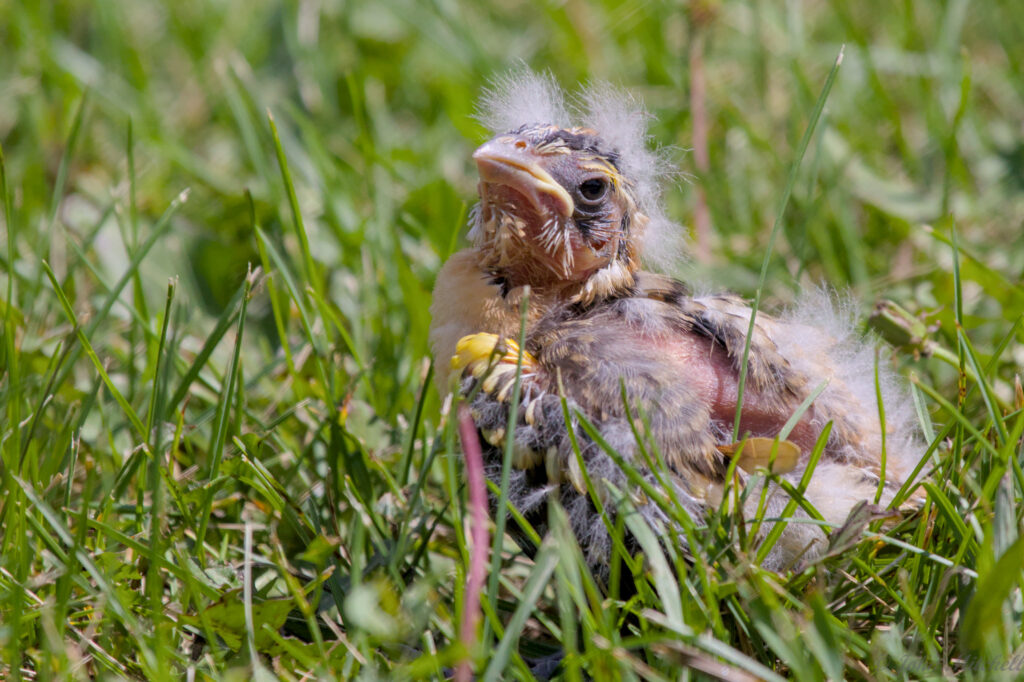
Hey, that is legit; birds are the descendants of the dinosaurs. They do not make birds angrier than this little guy. We were worried about him, but he seemed healthier and more developed than the other baby bird we saw out of its nest. We did not want to touch him and make the parents abandon him.
On the drive to the trailhead, there was nothing of interest, except that the turn to the trail was unmarked. We ended up driving to the Wildlife Visitor Center, and then back to the unmarked left turn on a dirt road. The good thing is that the trailhead is a mile off the road, unmarked, and not visible from the road. We were the only ones here. Well, at this end.

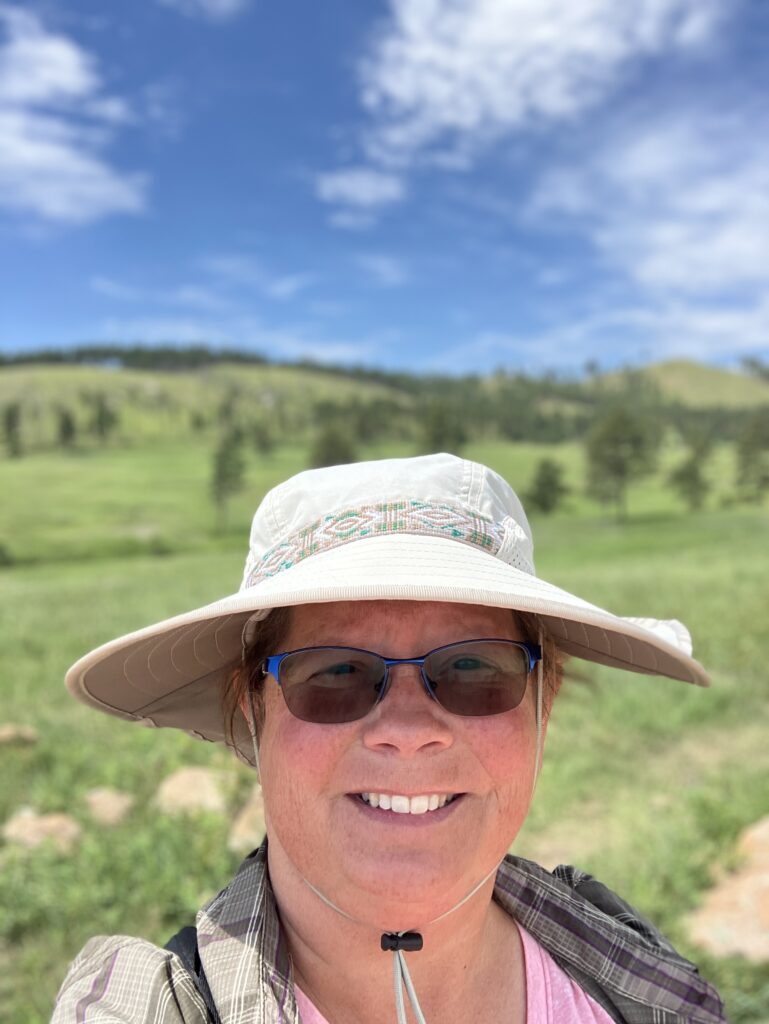
At the trailhead, we saw Prong-horned Antelope and Prairie Roses.

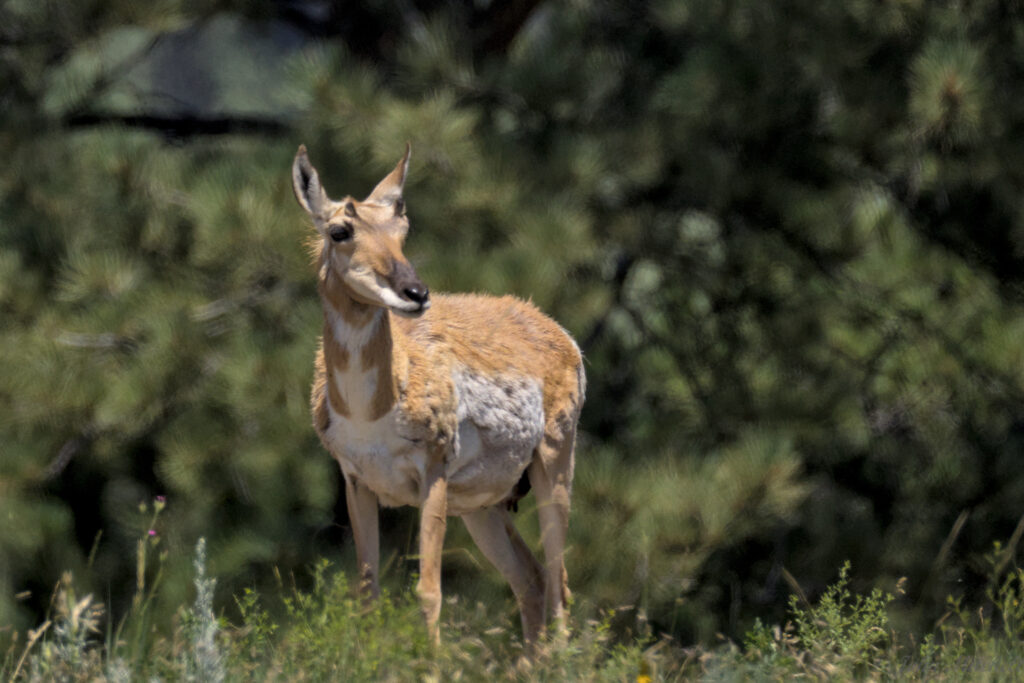


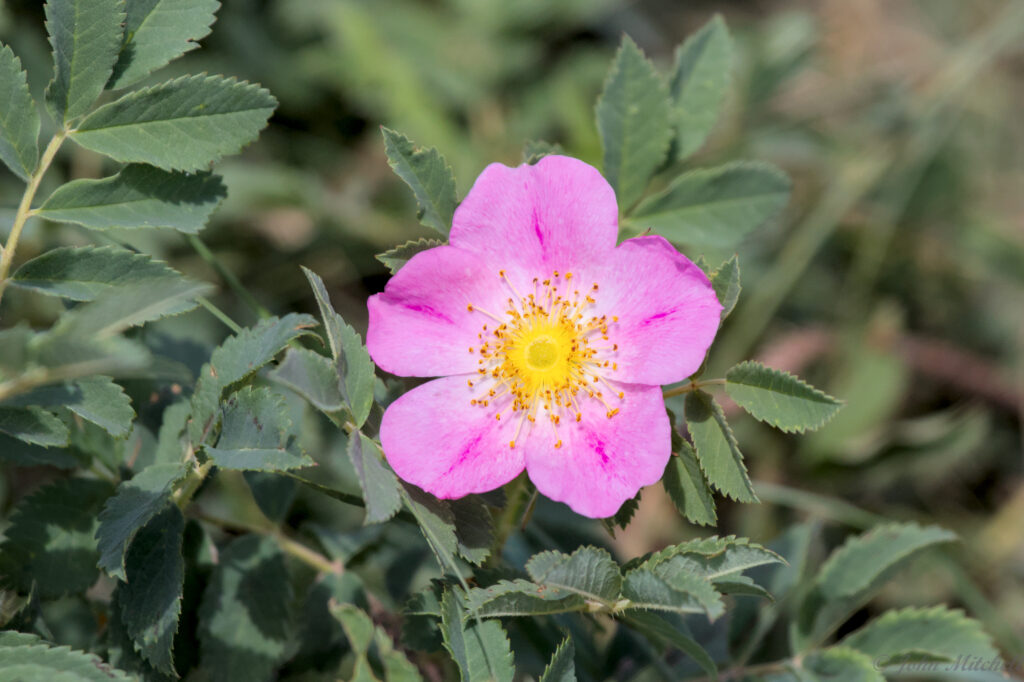
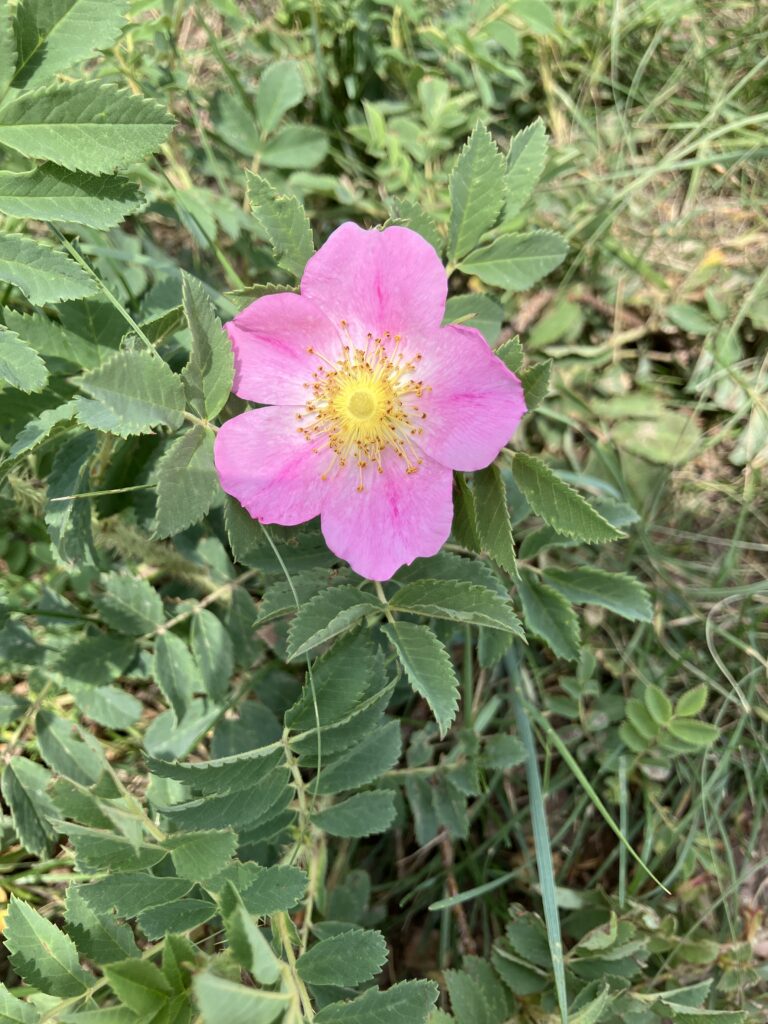
Just past the trailhead were woodpeckers pecking at the dead trees from the forest fires. We saw a Hairy Woodpecker here as we were starting the hike.
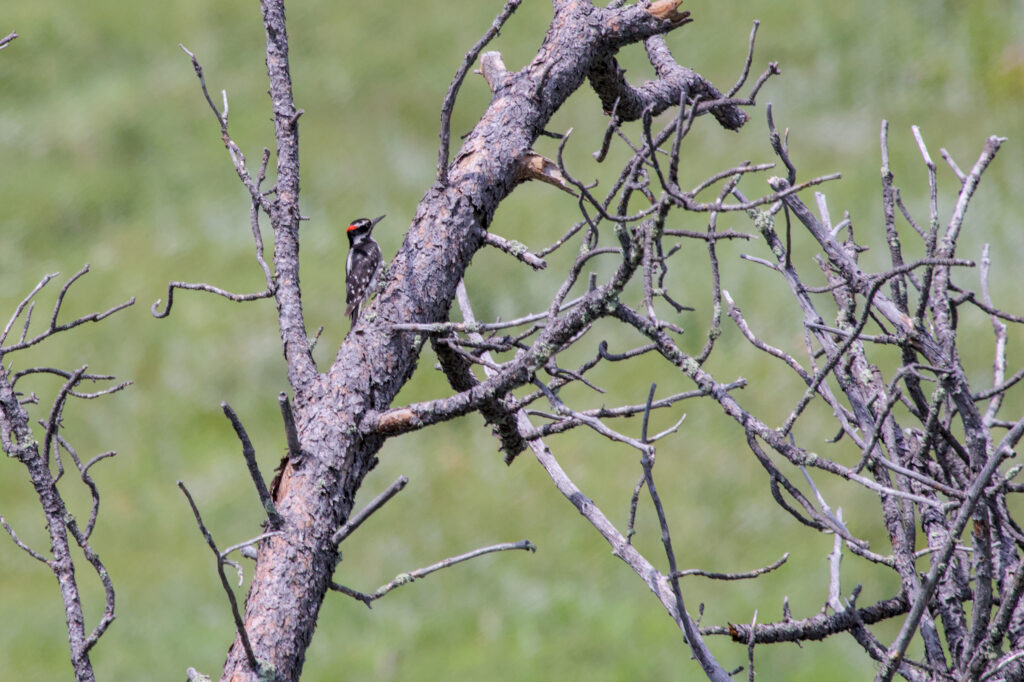


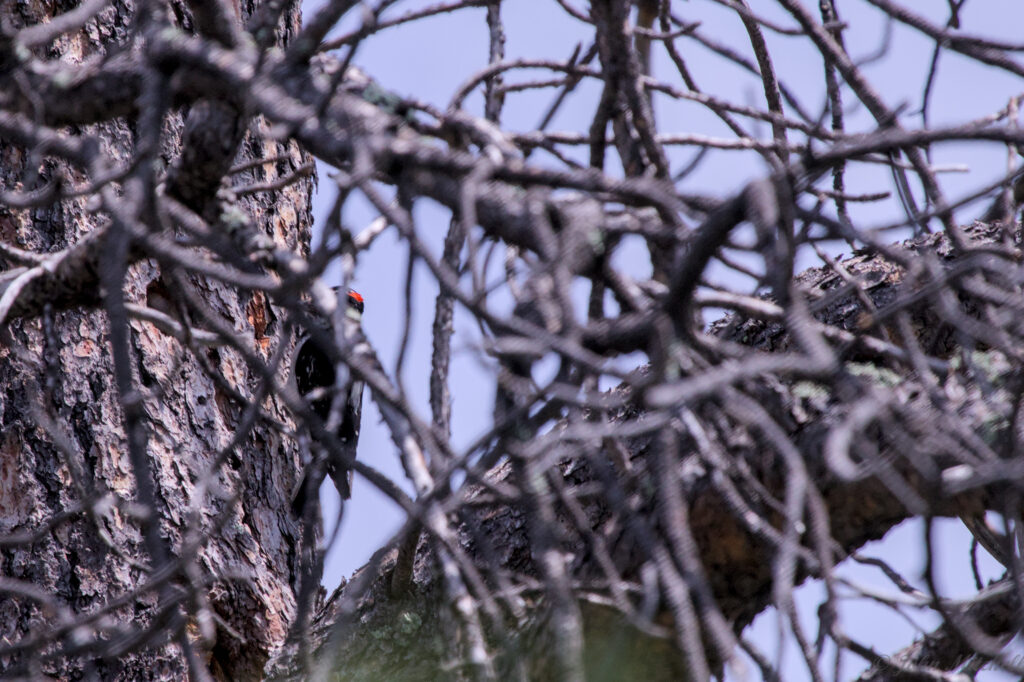
And a Red-headed Woodpecker flying by his nest hole. (More on this later. When we got back, Kate planned to look at woodpeckers with the spotting scope.)
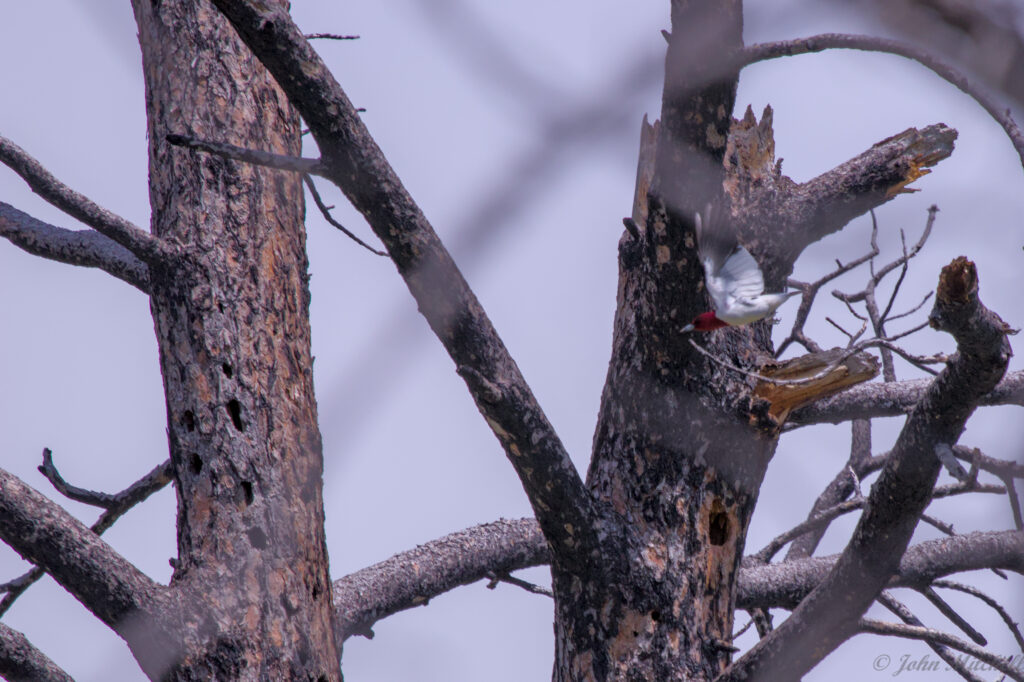
A short distance down the trail, we ran into a hiker with a dog. We like most dogs. We like most campers. Most campers with dogs, not so much.
<rant>A very large number of dog campers, possibly exceeding 50%, either think their dogs should not have to be on leashes, they should not have to clean up their dog poop, or both. This lady was at least in the first group. Her dog had a six foot leash, and it was 40 feet in front of her. Clearly, it was a well trained dog because it ignored her calling it back and ran up to John. John pointed at it and harshly told it to sit, so it cowered and slunk back to the owner. Clearly, it expected to be pet, not reprimanded. The lady held the leash for the 100 feet to the trailhead and back to pass us, and then she dropped the leash. She clearly knows what she is doing is wrong, and she does not care. This is what bothers us about campers with dogs. Too many of them think the rules do not apply to their dogs. Usually, they do not even bother to understand why the rule exists.</rant>
A short distance further down the trail, John frantically chased down another brown butterfly to get a clear picture of it. He failed, but he did get two blurry pictures. It looks like it might be a variant of the Common Wood Nymph Butterfly.


Not 50 feet further, John finally got a “not terrible” picture of a Meadow Lark.

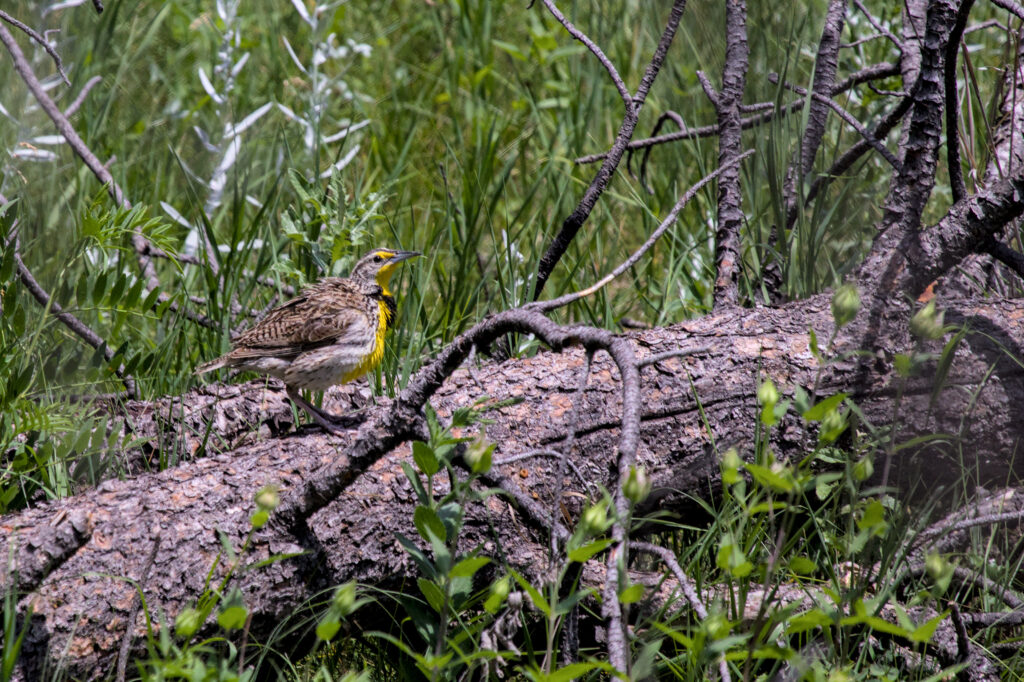
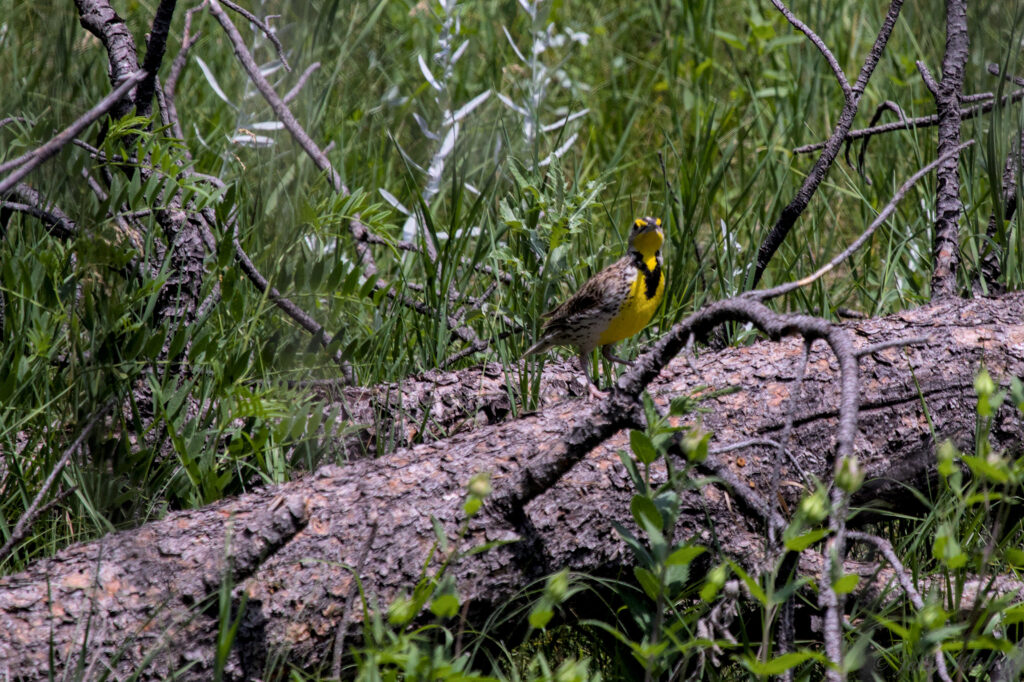
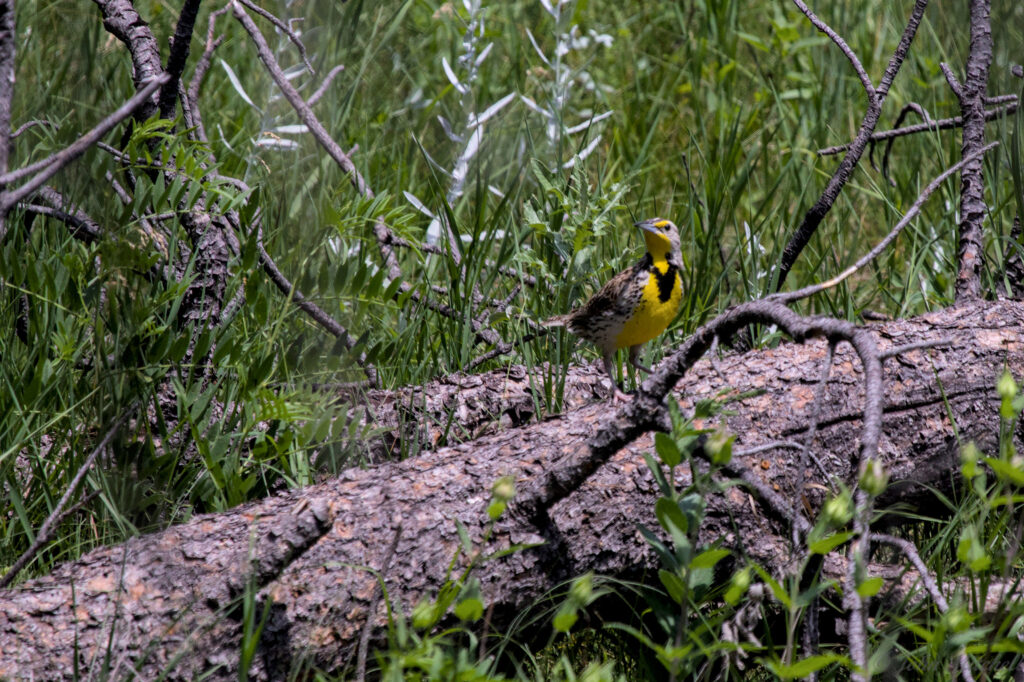
Unfortunately, the trail was not as scenic as we hoped. It was supposed to run along a dry stream bed, but this part just seemed to be an old dirt road. The scenery was mostly fields with dead trees piled in the center and Ponderosa pine forest. There were only a few birds, butterflies, dragonflies, and wildflowers.
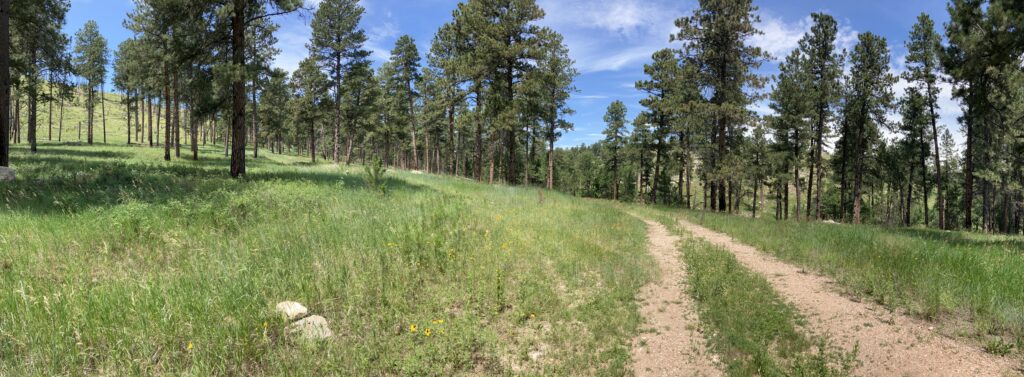
We did run across some Prairie Coneflowers. The red ones are the “Mexican Hat” variety. We did not look up the origin of the name. (Yes, the Prairie Coneflower part is pretty obvious. We are talking about the “Mexican Hat” part.)

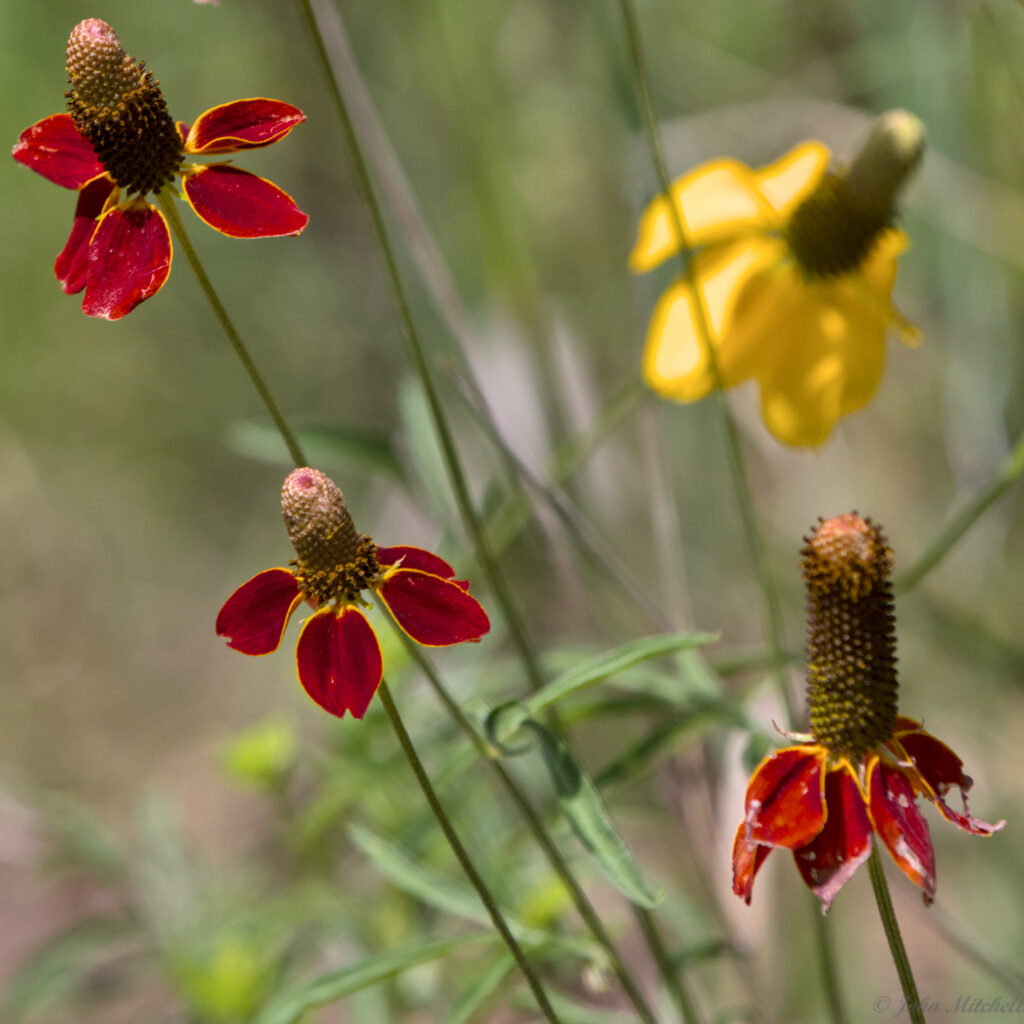
Based on the Merlin App, we kept hearing Western Pewee birds, but we could find them. It turns out that we actually took a picture of one … probably. The Flycatcher and Pewee birds have a lot of subspecies that look similar.

At this point, the road maintenance declined and the weeds were overtaking the road. We had not put on DEET, so we turned back at 1.75 miles. John had already flicked one dog tick off his pants. We had planned to go two miles, but the sun beating was also the life out of us. On the way back, we ran across more of the annoying brown butterflies that will not stop long enough for a good picture. This one may also be a Common Wood Nymph butterfly.
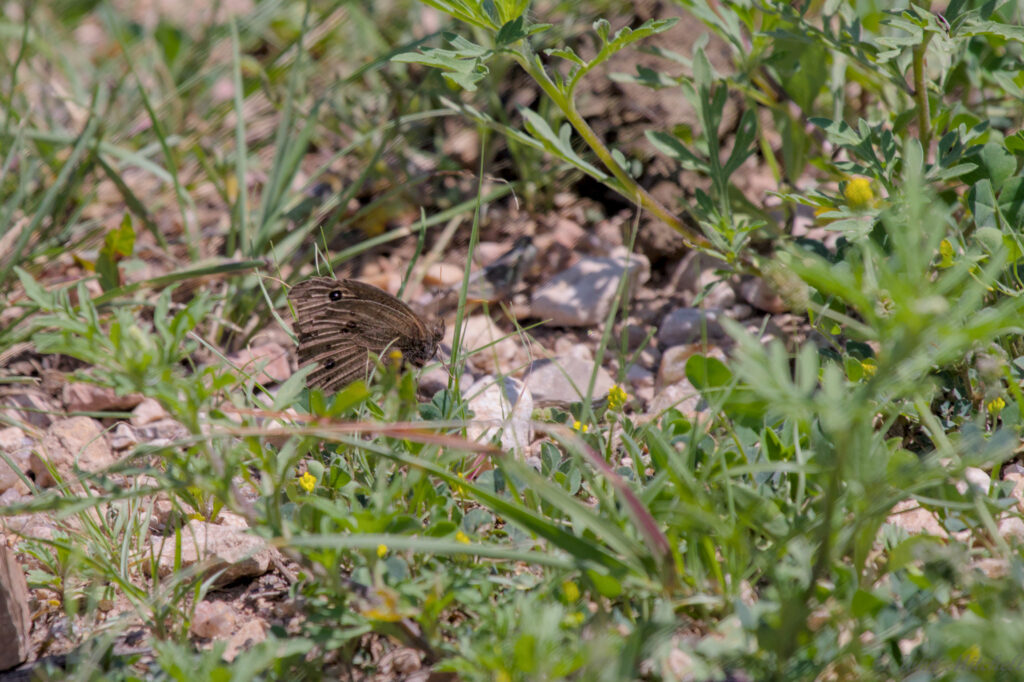


And a field of what is, likely, thistle. It was too far away to tell the type of flower.

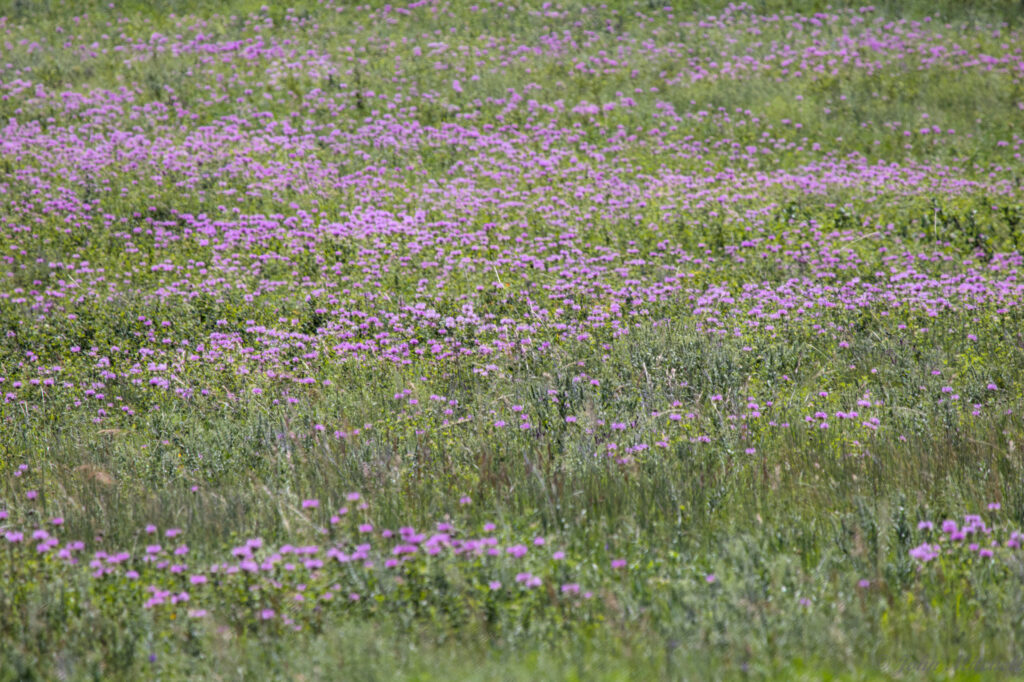
When we got back, Kate pulled out the spotting scope, and John pulled out the 800 mm lens. All this just to spy on woodpeckers. At this point, only the Red-headed Woodpeckers were active. There were two of them going in and out of a hole in a tree near the path. They also liked perching on the upper branches and using the branch to … sharpen their beaks?.

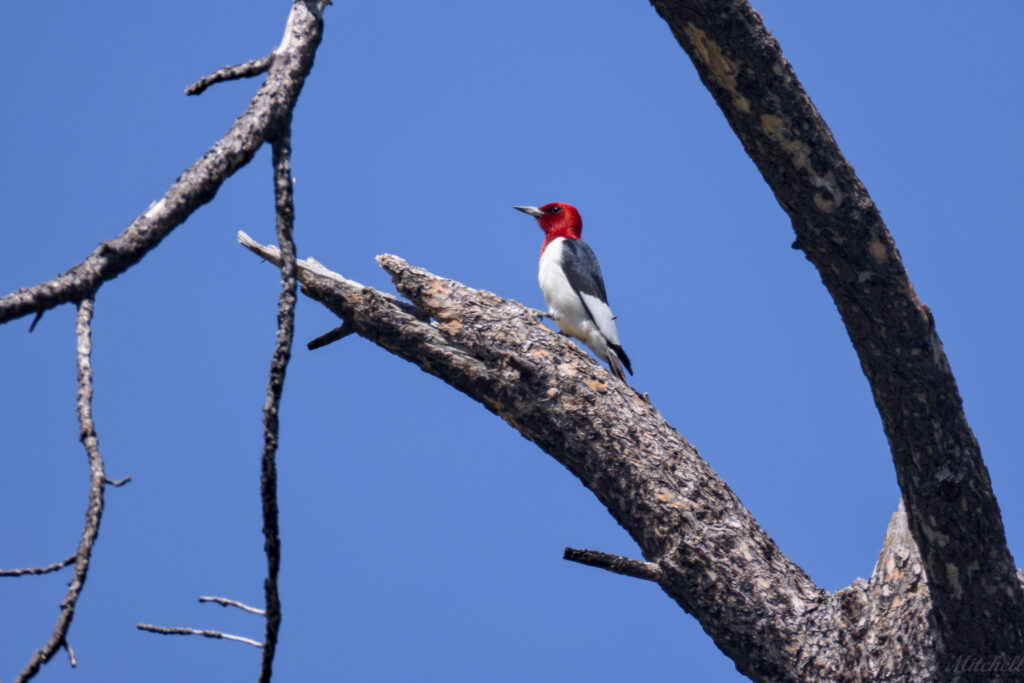
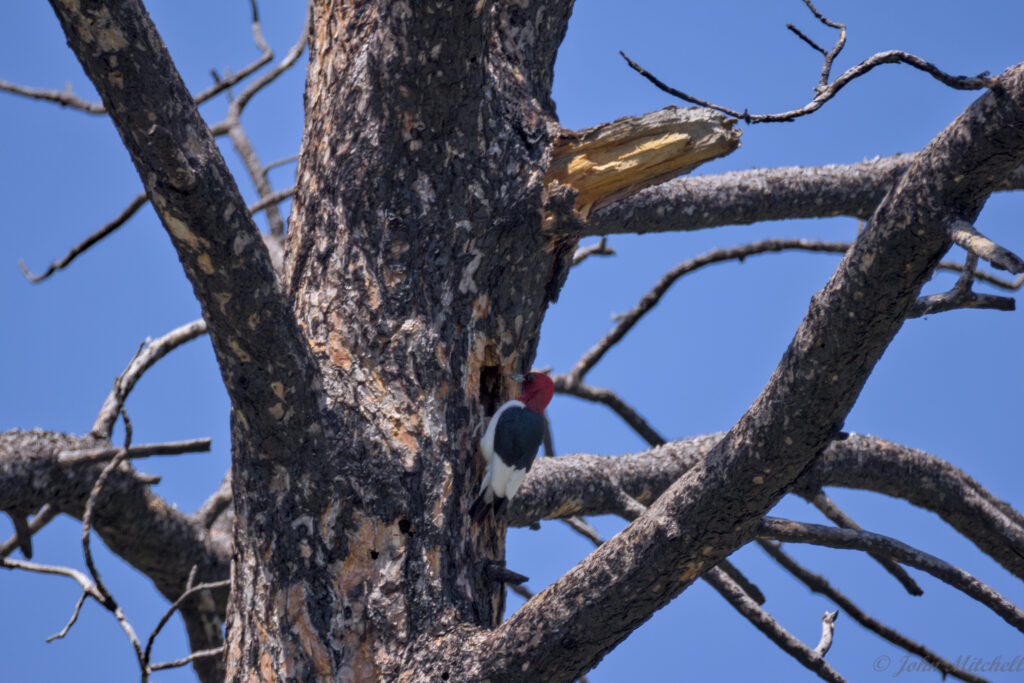
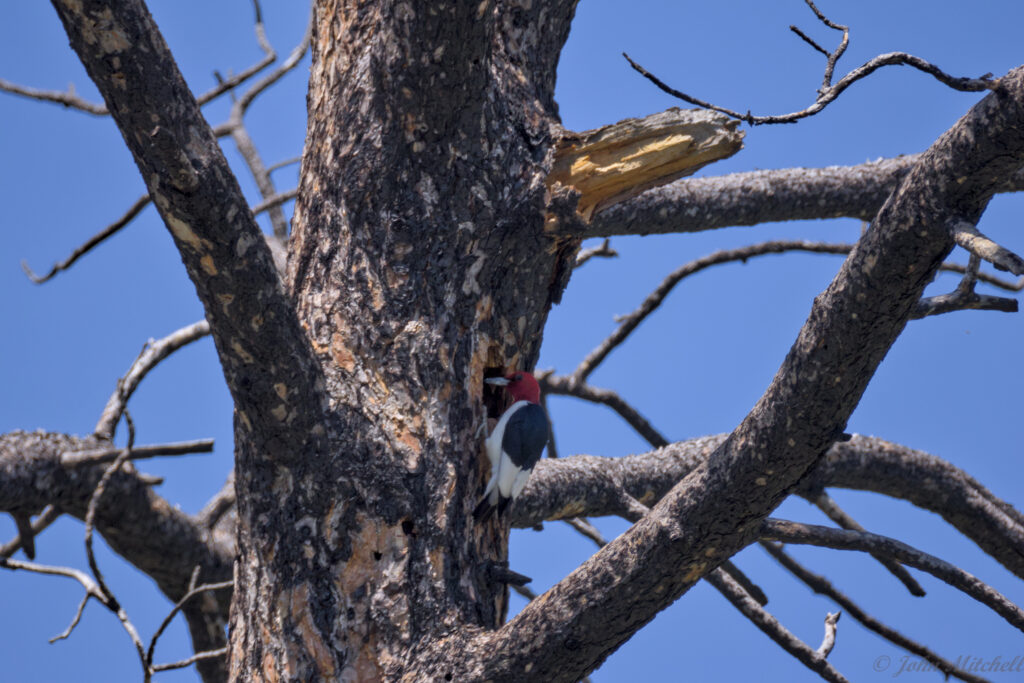


Kate also took pictures and video through the spotting scope. Unfortunately, her phone to scope adapter is an adjustable one, so it sometimes leaves a slight gap that can let glare through.


Around this time, a passing Eastern Kingbird came to close and fell victim to the camera.

The antelope was still there. In fact, it also had a friend hidden in the grass.

A storm was fast approaching from the direction of our hike. We delayed as long as we could, but we just made it home and unpacked before it started to sprinkle.
